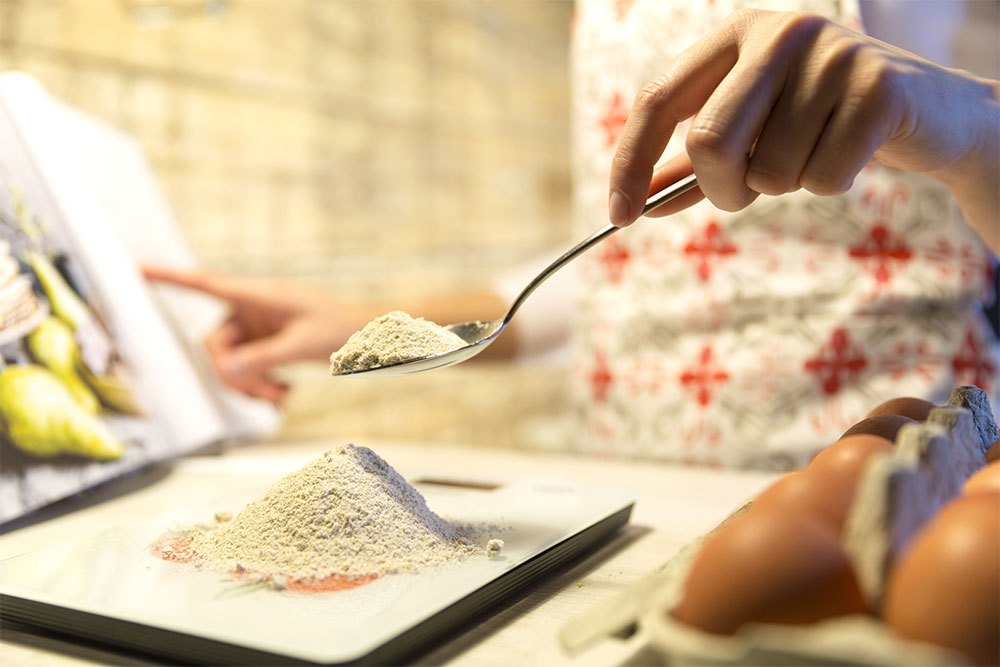Baking sounds intimidating and complicated, but once you have the correct tools and patience, it really isn’t. It’s fun and rewarding. Every individual —a professional or home cook— must begin somewhere, and we’ve got your back to get your basics right.
Invest in the right bakeware

When it comes to baking, the correct equipment ensures success. Always, always, bake in an OTG and not a microwave. Use silicone spatulas and whisks. Remember, an expensive hand mixer will be your best friend. Invest in a baking tray, wire rack (these usually come with the oven), cake moulds, muffins tins, loaf tins (I usually use the sturdy aluminum variety, as the silicone ones don’t hold shape easily). You will also require oven mints, parchment/ baking paper, a fine mesh strainer, a greasing brush and oven proof foil.
Stick to the recipe

When you are a beginner, experimenting with the ingredients, bake time, and measurements can often lead to disasters. Baking is super precise and has science backing it, thus it’s important that you read the recipe before beginning. It is always a smart move to follow the recipe to the T than following your instinct. If it says to whisk for five minutes, do not whisk for eight. However, at a later stage, once you get the hang of it, experimenting with ingredients (not measurements) can be a fun addition.
Mise in place

It means prepping your ingredients and required tools well in advance to streamline the process. Having all your ingredients measured, tools cleaned and laid out on the kitchen counter may sound like a lot of work, but trust me, it is such a blessing when you are not running around looking for stuff mid cook. Mise in place saves you a lot of time energy and keeps your kitchen counter neat and tidy. All professional chefs swear by this process for baking or rather cooking in general.
Quality is imperative

Always choose fresh and good-quality ingredients. Make sure you are keeping a track on the expiration dates of your baking powder or baking soda; they may lose potency and you may not get the desired results. While baking with eggs and milk, go in for fresh stock and not refrigerated. Always sift dry ingredients such as flour, salt, sugar, and cocoa to avoid any kind of lumps that may have formed while storing.
Measurements are everything

In baking, your instinct is never your friend. Accurate measurements bring you the best results. You may be baking a variety of cakes and pies, but the basic measurement ratios remain the same. Contrary to what we believe, in a recipe, one cup doesn’t mean your drinking cup or a bowl – there are a standard measuring tools available for baking and cooking at affordable prices. Since most recipes measure in cups, invest in measuring cups and spoon. The sets usually include tablespoons and teaspoons measurements as well.
Always line and grease

If you need to ensure that your baked goods aren’t sticking to the bottom of the pan, line everything with parchment paper and grease! These are god send for the perfect cakes, cookies, brownies; even savoury items. They ensure there isn’t any direct residue on the moulds and pans which makes it easier to clean.
Temperature is key

Whether it is the oven temperature, room temperature or the temperature of the ingredients, you have to stick to what the recipe demands. The starting point for cakes, cookies and most baked goods is creaming butter and sugar together; unless the recipe calls for melted butter, the butter should be soft and not too cold or rock solid. Always have your eggs, buttermilk, curd and milk ready at room temperature. This ensures consistency in texture and avoids lumps or curdling.Cakes lose moisture and turn out dry when baked at a high heat over a short period of time. Be patient and follow the temperature the recipe calls for, do not tweak it to reduce baking time. When you get the baked goods out of the oven, especially cakes, muffins and brownies, wait and let it cool for a few minutes before you de-mould it. This allows the steam to ease out which enables the structure to hold itself together. If frosting the cakes, make sure the cake is at room temperature and not warm.This does not apply to cookies where one can consume them right out of the oven or savoury baked goods, which must be removed from the pans piping hot.
Practice makes you perfect

There are very few who succeed in their first attempts at baking. The more you bake, the more you grow as a baker. Remember, every oven is different, room temperature varies in different geographies, and so do the quality of ingredients. The process will help you perfect your skills and, eventually, let you adapt the recipes to your liking and instincts.